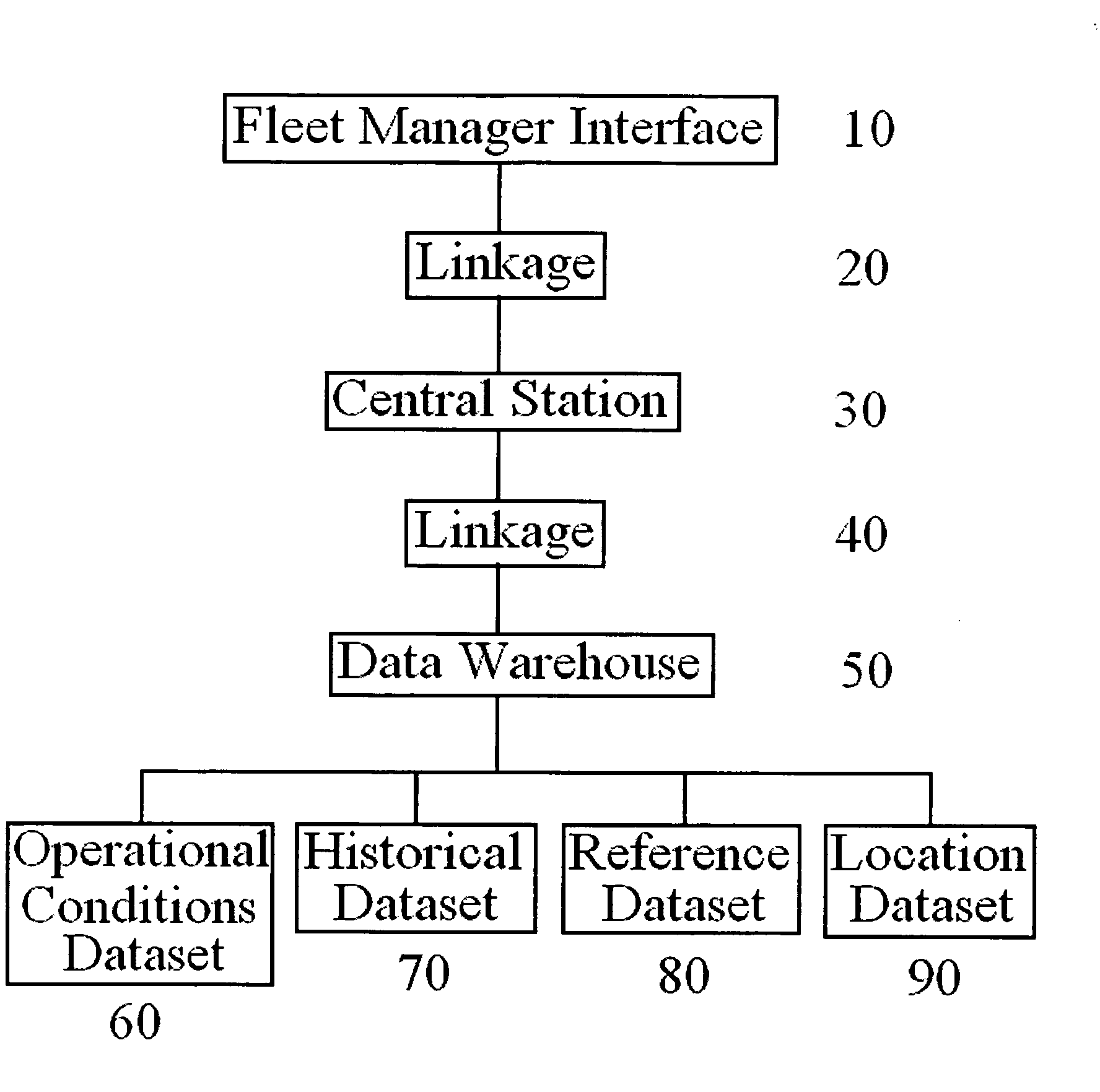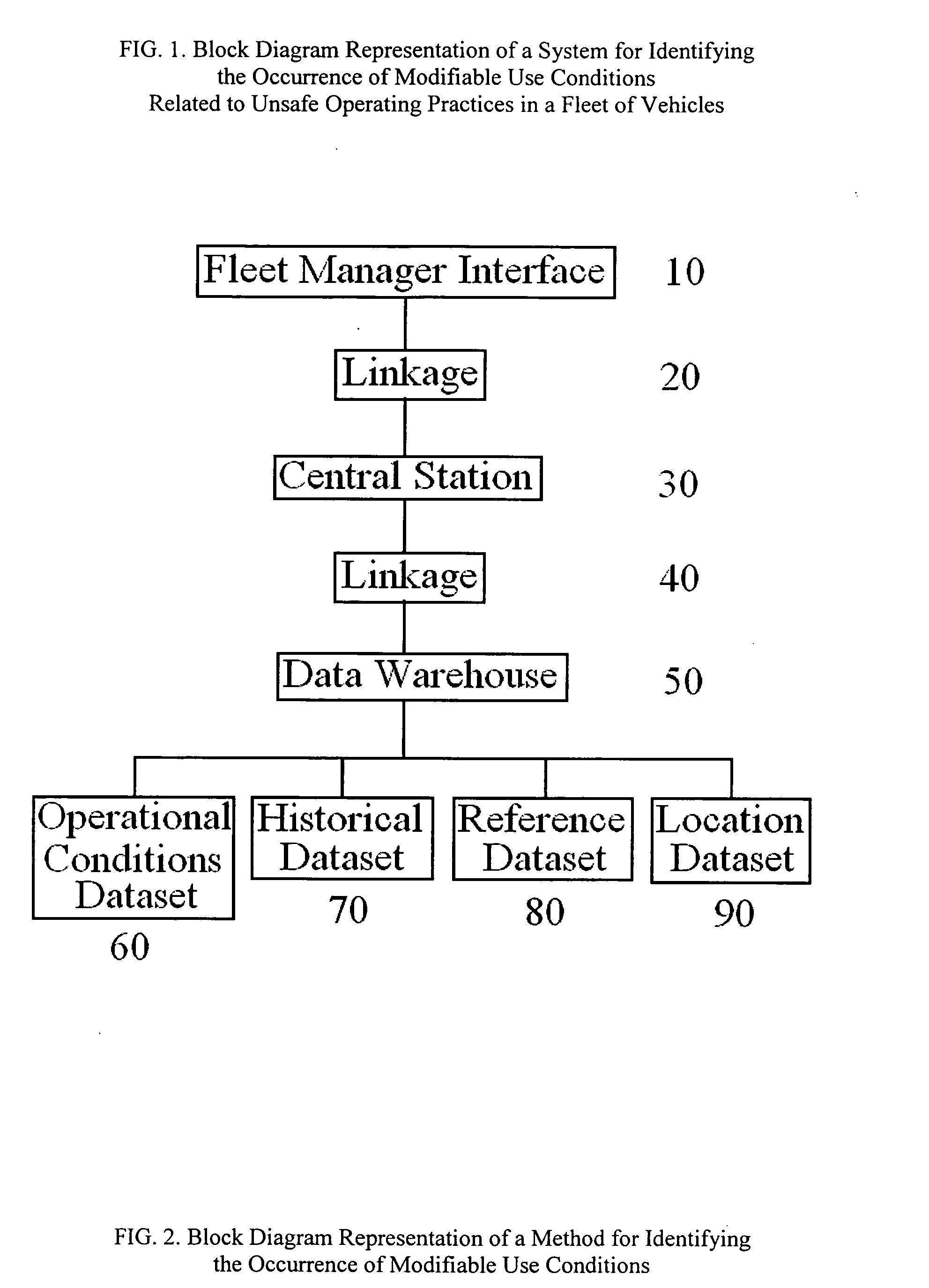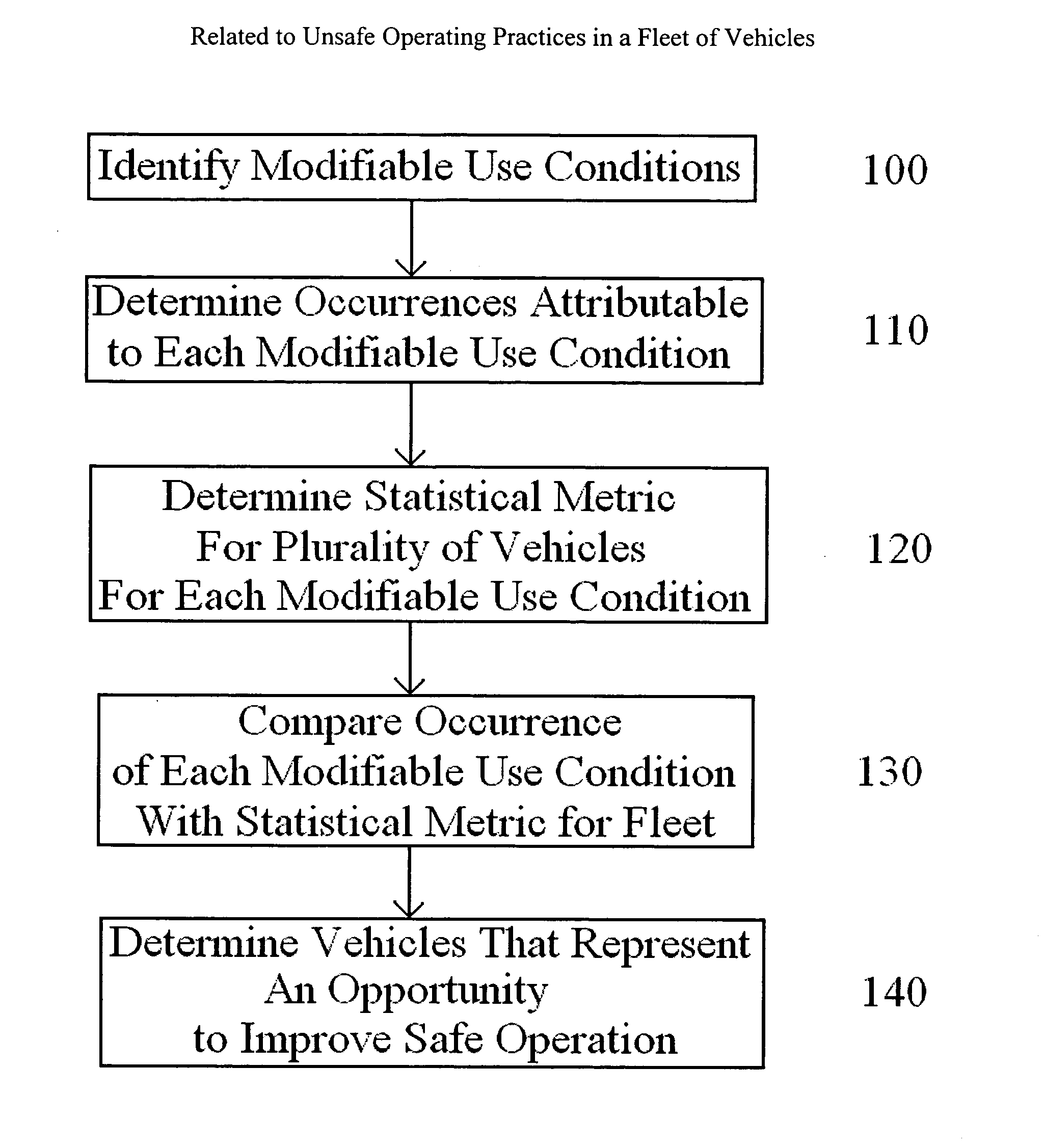System and method for identifying operational usage of fleet vehicles related to accident prevention
a fleet vehicle and operational usage technology, applied in the field of system and method for identifying operational usage of fleet vehicles related to accident prevention, can solve the problems of substantially obviating one or more problems, and achieve the effect of reducing the potential for accidents and cost saving
- Summary
- Abstract
- Description
- Claims
- Application Information
AI Technical Summary
Benefits of technology
Problems solved by technology
Method used
Image
Examples
example 1
Driving a Vehicle at a Speed Exceeding a Defined Speed
[0029] Data warehouse 50 contains an operational conditions dataset 60 on all of the vehicles of the fleet. Contained within that dataset is the speed of each vehicle over time. Fleet management determines a defined speed against which comparisons of the vehicles speed are made. For example, fleet management sets a defined speed of 65 miles per hour (mph), the maximum speed limit within the travel area of its vehicles. The user-defined statistical metric to be used is all occurrences over the defined speed. For each vehicle, the number of times when the 65 mph limit is exceeded are determined. In an embodiment, the maximum speed of the vehicle is determined. In another embodiment, the amount of time each vehicle exceeds the defined speed is determined. In a further embodiment, the amount of time each vehicle exceeds the defined speed in defined blocks of speed, such as 5 mph increments. For example, if the defined speed is 65 mp...
example 2
Frequency of Applying Brakes on the Vehicle
[0030] Data warehouse 50 contains an operational conditions dataset 60 on all of the vehicles of the fleet. Contained within that dataset is information on braking of the vehicle. Such information can be obtained by a variety of systems, such as that produced by Acculeon. In an embodiment, the number of times brakes are applied over a set period of time is evaluated. In another embodiment, the frequency that a driver changes from acceleration to braking is evaluated. This procedure can determine aggressive driving or following too closely possibly indicating a safety issue on an individual basis. This calculation may be performed over a number of time periods including, but not limited to days, weeks, months or years.
[0031] In an embodiment, a user-defined statistical metric for the fleet is determined based on the number of times brakes on a vehicle are applied over a set time. For example a user-defined statistical metric may be set at ...
example 3
Frequency of Rapid Acceleration or Deceleration of the Vehicle
[0033] Data warehouse 50 contains an operational conditions dataset 60 on all of the vehicles of the fleet. Information on acceleration and deceleration of the vehicle may be contained that dataset. A fleet manager can set a rate of acceleration to a value indicative of a “jack-rabbit” start. The fleet manager can set a rate of deceleration to a value indicative of “hard-breaking”. In an embodiment, the number of times the vehicle accelerates over a set rate over a set period of time is evaluated. In another embodiment, the maximum acceleration of the vehicle is evaluated. In an embodiment, the number of times the vehicle decelerates over a set rate over a set period of time is evaluated. In another embodiment, the maximum deceleration of the vehicle is evaluated. In another embodiment, the number of times the vehicle accelerates over a set rate and the number of times the vehicle decelerates over a set rate over a set p...
PUM
 Login to View More
Login to View More Abstract
Description
Claims
Application Information
 Login to View More
Login to View More - R&D
- Intellectual Property
- Life Sciences
- Materials
- Tech Scout
- Unparalleled Data Quality
- Higher Quality Content
- 60% Fewer Hallucinations
Browse by: Latest US Patents, China's latest patents, Technical Efficacy Thesaurus, Application Domain, Technology Topic, Popular Technical Reports.
© 2025 PatSnap. All rights reserved.Legal|Privacy policy|Modern Slavery Act Transparency Statement|Sitemap|About US| Contact US: help@patsnap.com



